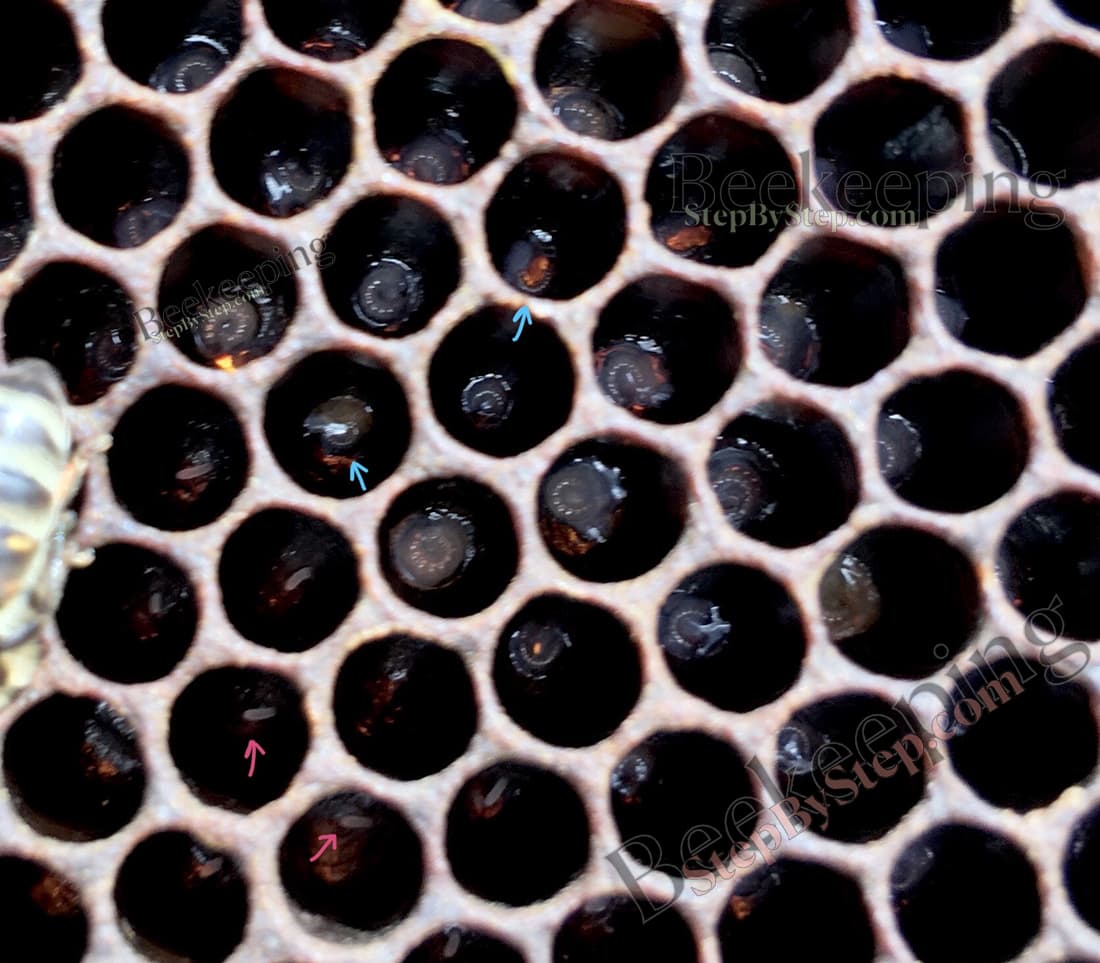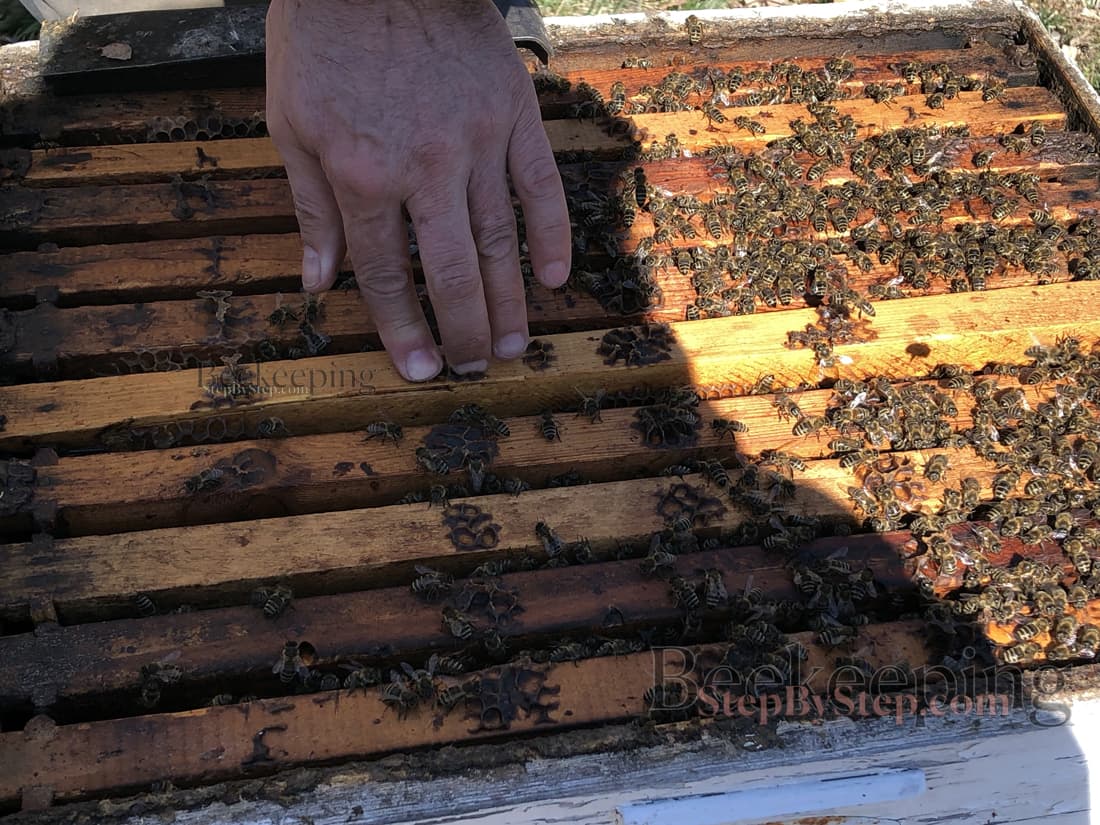If the bee colony is queenless for some time, it will harder accept new queen. We will try to increase chance for acceptance by adding a frame of young brood. It will also help us to be sure that the colony is really without a queen or laying workers.
If the hive has a queen that for some reason isn't laying eggs (a young queen that needs to mate or a mated queen which for some reason has stopped laying) or laying workers have appeared, the bees will kill any added queen or destroy any added queen cell.
The same problem happens if you try to combine such a colony with another good colony - problematic colony will try to kill that good colony’s queen.
Therefore, before you do anything, you should be absolutely sure that the colony is without a queen or laying workers.
How can I be absolutely sure that the colony is queenless?

We will accomplish this by adding a frame of a young brood (if you have, you can add two frames but be careful not to weaken any other colony).
There should be young larvae up to 3 days old on that frame.
It would be better if there are eggs on it as well. That way you can be certain that the brood you are adding isn't too old.
After 3-4 days look at that frame and see whether the bees started making queen cells on it.
If there are queen cells on the frame
If there are queen cells on it, this means that there really is no queen or laying workers. Now that we know that the hive is queenless we can deal with the problem.

If there are no queen cells on the frame
If we don't find queen cells on the frame, that means that the colony:
![]() Either has a queen that for some reason isn't laying eggs:
Either has a queen that for some reason isn't laying eggs:
![]() A young queen that has yet to start laying, or
A young queen that has yet to start laying, or
![]() Something's wrong with the current queen
Something's wrong with the current queen
![]() The laying workers started to appear and are just about to start laying eggs.
The laying workers started to appear and are just about to start laying eggs.

What do we accomplish if we add a frame of a young brood
By doing this we will accomplish three things:
![]() We can say with certainty that the hive truly doesn't have a queen or laying workers
We can say with certainty that the hive truly doesn't have a queen or laying workers
![]() lf the colony is really queenless, it will easier accept a new queen or queen cell
lf the colony is really queenless, it will easier accept a new queen or queen cell
![]() Adding a brood frame will help keep the broodless colony from weakening too much
Adding a brood frame will help keep the broodless colony from weakening too much
Adding frames - steps:
So, we need to add a frame with young brood to the hive that we suspect is without a queen (larvae should be up to 3 days old).
Make sure that with moving the frame you don't move the queen from queenright colony.
How can I know if the larvae are not too old?

The best solution is to add a frame that has both eggs and small larvae. That way you will be certain that there are larvae the right age on the frame.
When you add the frame, mark it in a certain way so you know which frame you added.

Repeat inspection - steps:
☀ 3-4 days after adding the frame
You will need:
- Smoker
- Hive tool
- Beekeeping suite
- Beekeeping gloves
Frame inspection - step by step:
1Open the hive so you have access to the frame you added.
2Pick up the frame from the hive and check if there are queen cells on it:
![]() If there are queen cells - the hive is queenless and you need to do something about it.
If there are queen cells - the hive is queenless and you need to do something about it.
![]() If there aren’t queen cells - close the hive and repeat the inspection in a week.
If there aren’t queen cells - close the hive and repeat the inspection in a week.
3If you haven't found the queen cell, redo a detailed inspection of the hive in a week or so:
![]() If there is a young queen, and if the nuptial flight goes well, she should soon start laying eggs. If this is the case, you will soon be able to see the eggs in the comb cells.
If there is a young queen, and if the nuptial flight goes well, she should soon start laying eggs. If this is the case, you will soon be able to see the eggs in the comb cells.
The problem that may occur is that the young queen doesn't come back from her nuptial (mating) flight (becomes the prey of a predator, etc.) or doesn't mate properly.
![]() If laying workers start appearing, they will soon start laying as well and you will be able to see many eggs in one comb cell.
If laying workers start appearing, they will soon start laying as well and you will be able to see many eggs in one comb cell.
In any case, if the bees don't start making queen cells, there is no point in adding a new queen or queen cell in the hive because the bees won't accept it. Also, you can't combine that colony with another because the bees may kill the queen from that other colony.
If you are unable to determine what the problem is, it is best to leave the colony as it is. It is better to loose that one colony than to damage another good colony in an attempt to save the bad one.